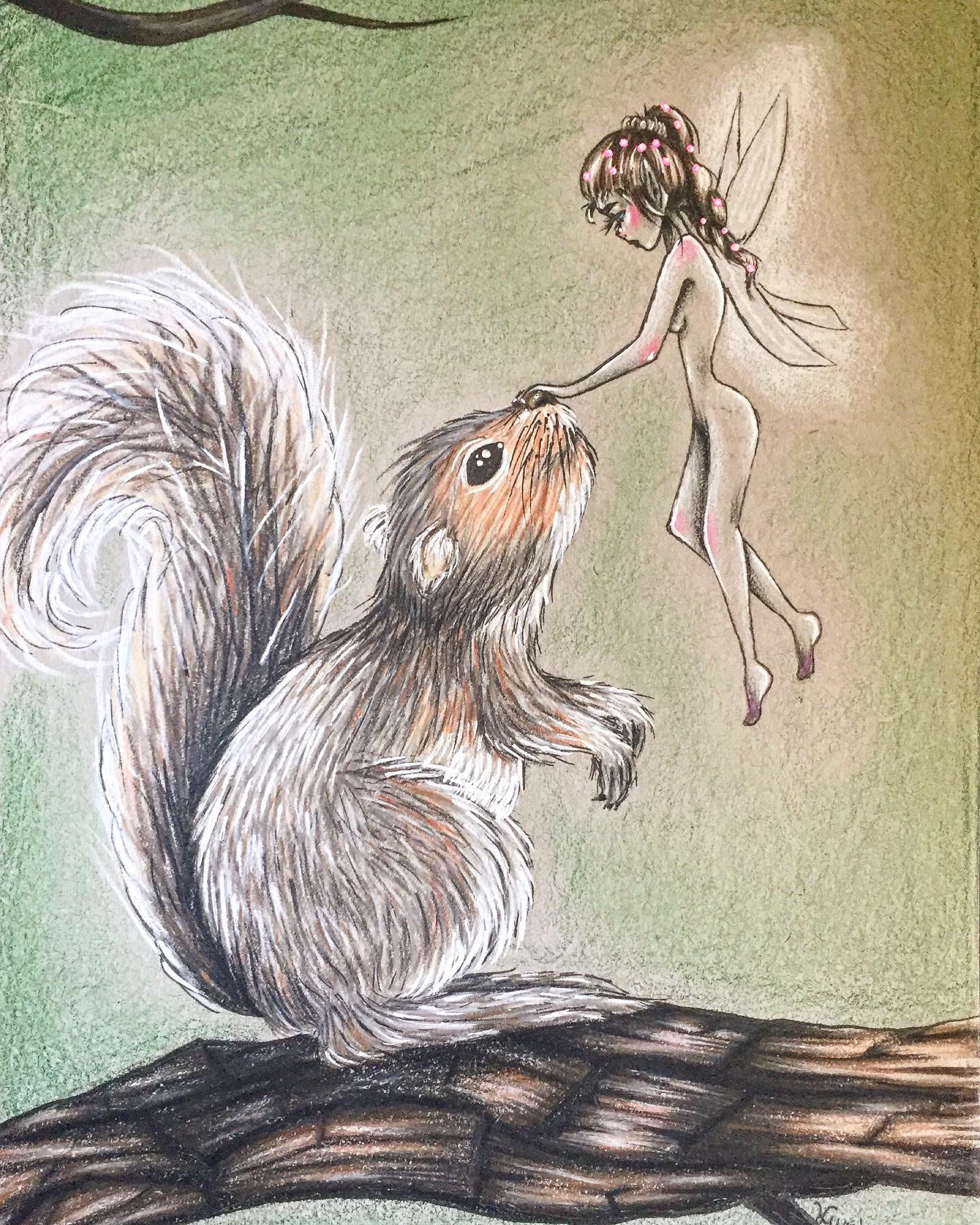Team Amy or Team Jo? Why must we pick a side?
Emma Margaret Thomson

Animal Fairy | Hunter Lapp | Illustration
✺✺✺
There’s this Buzzfeed quiz that will tell you which March sister you are from Louisa May Alcott’s Little Women. I got Amy.
Amy?! I had thought incredulously. Me? An Amy? This quiz is so totally wrong. Right?
When I first read Little Women I was 12 years old, in the 6th grade, and knew without a doubt that I was a Jo. I had to be. I wrote in a journal, I liked to wear blazers and challenge the constraining feminine fashion of my peers at the time. I was a Jo – or at least I thought I was.
I wanted to be like Jo March so badly, and as it happens that’s what Louisa May Alcott wanted me [the young, female reader] to want. Jo is, statistically speaking, the most favored March sister and also the most masculine one, which is what Alcott intended. She [Alcott] based Jo off of herself and the other March sisters on her respective sisters in her real life. Though I am sure that Alcott exaggerated the actions of each so she was able to portray different emotions and world perspectives through each sister.
If you’re familiar with the book, you know that Beth is the selfless, optimistic, and incredibly ill (RIP) sister. Meg is the peacekeeper, the eldest, and definitely the wisest. Meg maintains a realist perspective but, does end up marrying for love instead of financial gain, against what she believes to be her better judgment. They are both the quieter ones, often fading into the background and leaving the more problematic (it had to be said) two in the foreground.
Poor Meg and Beth, are overlooked, lowkey mistreated by the plot, and given horrible storylines. But, they will have to be a conversation for another time because we are here for the two more controversial sisters, Amy and Jo.
Our Jo, our ambitious, trouse-wearing heroine, was written with a kind heart, a bold lifestyle, and overall um, obliviousness to the world around her? Was that too harsh? Whatever she’s fictional anyways. But, my point is that Jo is well, Jo, and there are flaws to be had and Laurie’s to be rejected! Oh, to be such an anarchist that you literally reject your childhood best friend because he is too perfect for the role of your forever and you hate the concept of marriage (fair tbh.) Obviously, I have thoughts.
But, let us not forget another reason we are here, Amy. As the youngest March sister, Amy starts spoiled, materialistic, dramatic, and a bit selfish (Aren’t we all this way when we are like 13 though too? Just a thought.) Amy’s character development, in my opinion, is one for the ages. Amy doesn’t shy away from her femininity as Jo does, she embraces it and lets herself enjoy the material aspects of being a woman. Amy acknowledges that due to societal constraints at that time, the route to power was through marriage, and she accepts that notion, to benefit both herself and her family. But, all the general population seems to see her as is her marriage to Laurie, and her ‘disloyalty’ to Jo.
And, I won’t lie, the first time I read the book, I was mad at Amy. I felt like I was an extension of Jo herself – that my younger sister had betrayed me (even though I [Jo] had already rejected said boy multiple times.) This was what Alcott wanted, it’s how the book was designed to make you feel, a kinship with selfless Jo and a dislike of ingenuine Amy. But really, why aren’t we asking ourselves why Alcott wrote her novel with the [assumed] intention of dividing the March sister fanbase into Team Amy and Team Jo?
Why, can there not be multiple heroines in the story? Why must the reader be forced to villainize one and idolize the other? We, the readers, inability to perceive the novel as little more than a dramatic sequence of boy loves girl, girl does not love boy, boy finds new girl, and then we must hate new girl.
The thing is, Little Women is a classic novel that was written in a time when there were so few great romances available to the masses to be read about. So, love, or the lack thereof, was what the first readers of Alcott’s book focused on and subsequently it’s what we now latch onto as well. When, in actuality, Little Women is about lots of things; life, love, sisterhood, femininity, and growth. It is a coming-of-age novel that follows the March sisters, it is not a story about finding Laurie Laurence a girlfriend.
Instead of interpreting Alcott’s work as a romance novel, we could accept its many themes and our love for all of the March sisters. We could be making the case that both Amy and Jo (And Beth and Meg, of course) offer something for everyone. Whether you identify with Jo’s lack of socially accepted femininity or with Amy’s embrace of it, there is no point in attempting to compare the two sisters. They are opposites and show us that femininity is broad, it’s vague, and can be interpreted in different ways by different people.
My point is that while each reader is very much entitled to their own opinions on which March sister is best, we should not seek to compare our beloved ‘little women.’ Alcott, more than anything else, wrote about the bonds between sisters and how, regardless of differences in personality, femininity, life goals, and many other things, they will always love each other. So, maybe we should as well.
